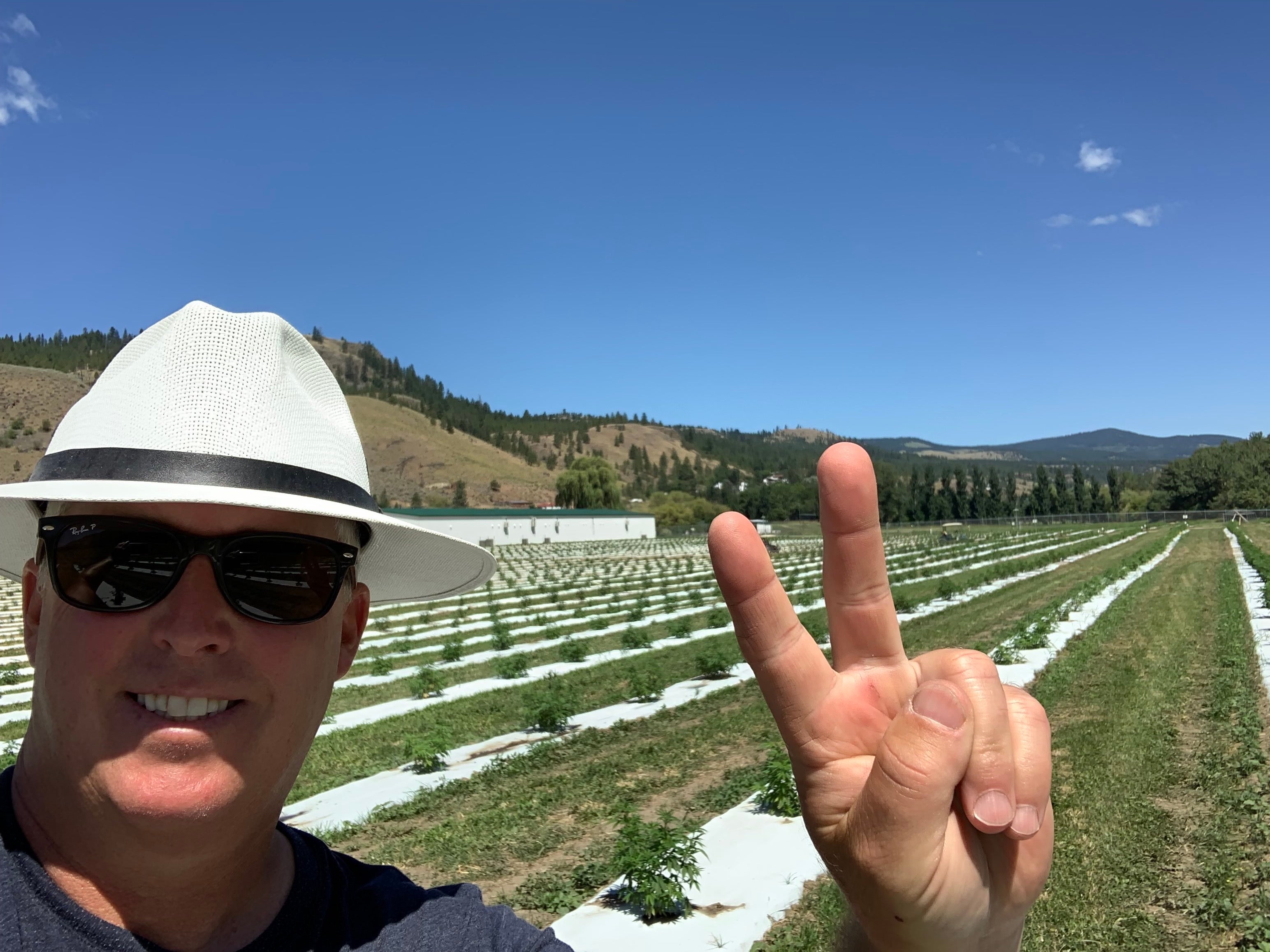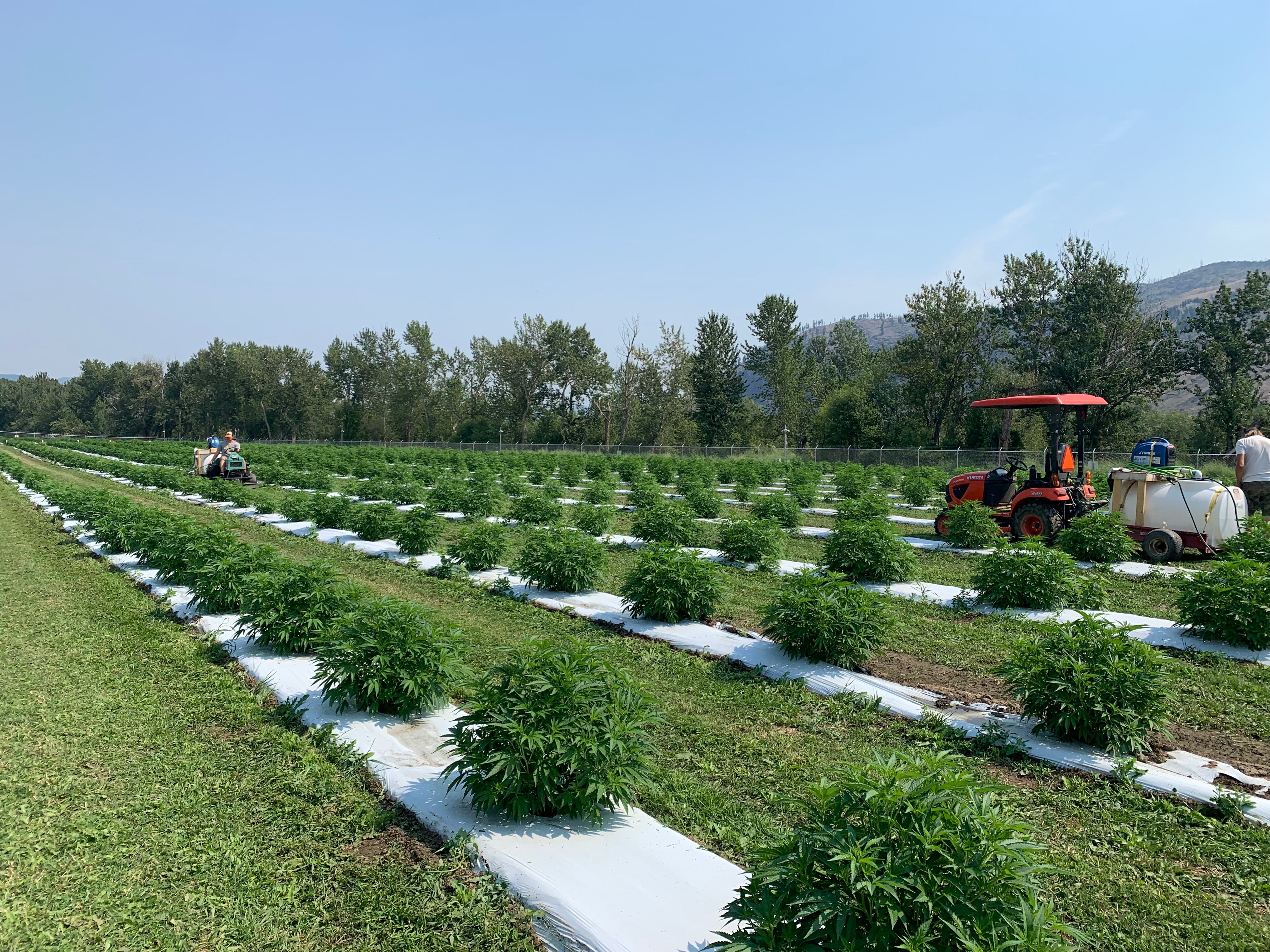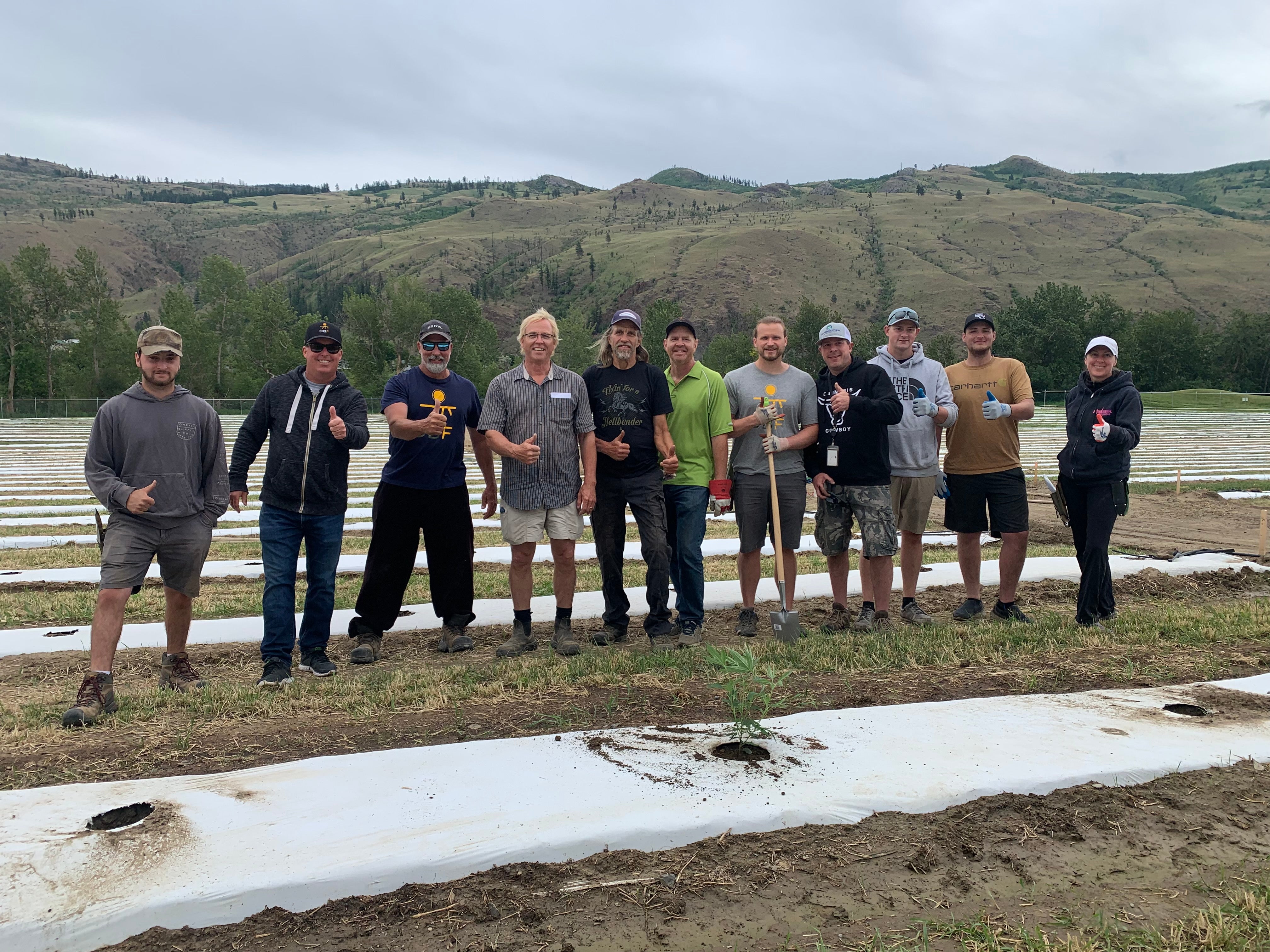How the heatwave is supercharging cannabis growth – special report
One cannabis farm believes the toasty conditions caused by the heatwave have left them with a bumper crop on their hands, writes Ashleigh Stewart


Fruit and vegetable crops across Canada’s British Columbia have been badly hit by a record-breaking heatwave, but one plant seems to be thriving in the hot, smoky conditions: cannabis.
Large swathes of the Thompson-Nicola Regional District in BC’s interior remain shrouded in smoke, as dozens of wildfires continue to rage across the region after last week’s period of extreme heat.
On June 30, the village of Lytton was destroyed by a fire, just days after it broke the record for Canada’s all-time highest temperature for three days in a row, reaching 121.1F (49.5C).
Meteorologists say the unprecedented conditions are being caused by a “heat dome” over western Canada and parts of the US Pacific northwest.
A heat dome is an unofficial term given to an area of hot air high up in the atmosphere that lingers over an area for a prolonged period of time, trapping in heat below.
The heat has caused chaos for the region’s orchardists and farmers, with berry growers in particular steeling themselves for heavy losses caused by sunburnt fruit.
However, one cannabis farm believes the toasty conditions have left them with a bumper crop on their hands.
Bill Bilton, the owner of Dunesberry Farms, Kamloops’ only outdoor cannabis farm, believes his new crop has flourished in recent weeks, despite the extreme heat and the wildfire smoke in the area.
“The plants actually like the smoke. They like the smoke because it’s full of carbon dioxide,” he says.
“It’s a perfect combo, because we’re getting sunlight, plus the carbon dioxide.”

Canada legalised the sale and production of recreational cannabis in October 2018. The mild and sunny climate of British Columbia’s interior is a favoured spot for cannabis growers, with about 70 licensed cultivators operating across the province. In 2019, cannabis production and retail contributed about $2.4 billion to BC’s gross domestic product.
Bilton grows 10 different cannabis strains across eight and a half acres of land in a valley about 20 kilometres north of the town of Kamloops, adjacent to The Dunes Golf Course, which he also owns. This is his first year in the business, having only received his licence in December 2020.
He estimates that plants in his most recent crop, planted just one month ago, have grown over one foot in the 10 days since the heatwave began – far more than they would have in normal conditions.
“It’s the industry’s secret recipe. If you’re in a casino, they pump it full of oxygen to keep you awake. In the cannabis industry, you pump out carbon dioxide. You can actually get 30 per cent bigger plants and therefore a bigger yield that way – but it’s got to be the right amount.”
That “right amount”, according to Bilton, is a light smokiness in the air, similar to the conditions around his property right now. Anything more than that, and the plant’s resin will absorb the smoke in the air, altering its flavour.
Bilton is lucky, as the majority of the wildfire smoke has settled in another valley that runs east to west and intersects Kamloops. The air quality index in the town has been raised to its highest level, which means it is a “very high” risk to health.
However, Bilton says, thick smoke would only affect his crops that were used for recreational cannabis flower – which is cannabis that is smoked.
“If it’s super smoky, way worse than this, then there’s a slight chance that the plant actually takes on a smoky flavour. But some people like that – it’s like a smoky wine,” Bilton says.
However, 90 to 95 per cent of Bilton’s crop is used for extraction – the method of producing THC oil.
His outdoor crop is known as photoperiod cannabis plants, which are planted in the spring and will be harvested in the fall. He sells to three Canadian suppliers, and has two international deals in place in Israel and Australia.
Taking into consideration the farm’s location, wedged in between two small mountain ranges and next to a river, as well as the weather conditions, means Bilton believes he has a “nice little scenario here, knock on wood”.

Other farmers have not been so lucky, with berry growers’ social media pages awash with apologies to customers explaining a lack of fruit due to damaged crops. A post by the popular Nu Leaf Produce Market in Kamloops warned that Fraser Valley blueberry crops had experienced “significant damage” and had resulted in a shortage, driving up the price. Heavy financial losses for farmers in the area are expected.
However, Kamloops’ popular Monte Creek Winery, one of the region’s top tourist attractions, says it seems to have escaped the heatwave unscathed, with no reported damage to its grapes.
Delta-based cannabis growers Pure Sunfarms also say they are “lucky” to not have had any crops affected by the extreme heat.
The company grows its cannabis in a 1.1 million-square foot greenhouse operation, meaning it is less susceptible to the elements, Pure Sunfarms chief executive Mandesh Dosanjh says.
However, they were still monitoring one of their newly planted crops closely for signs of any damage.
Sunfarms works in a “perpetual harvest cycle”, with 16 rooms growing cannabis and a different room harvested every week. During the heatwave, teams were concerned for the room that housed their youngest plants, but believe they saved them with increased misting and shade control.
Join our commenting forum
Join thought-provoking conversations, follow other Independent readers and see their replies
Comments
Bookmark popover
Removed from bookmarks